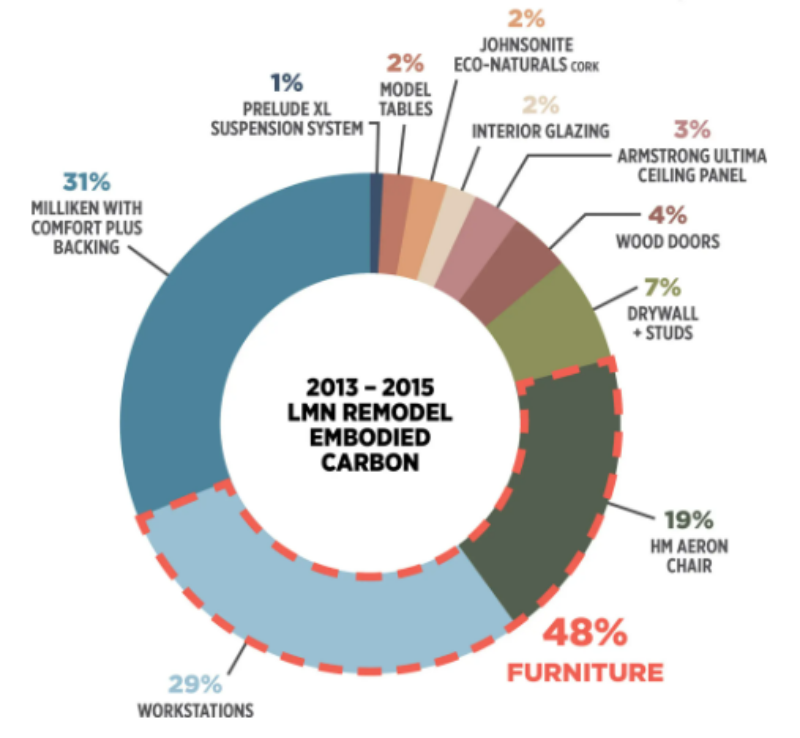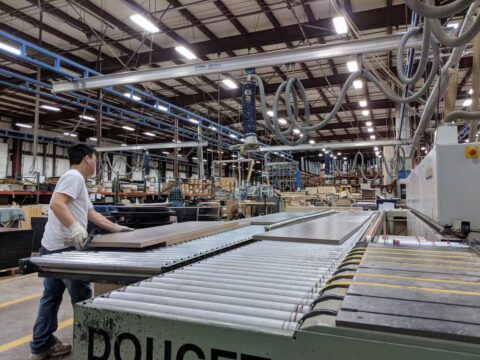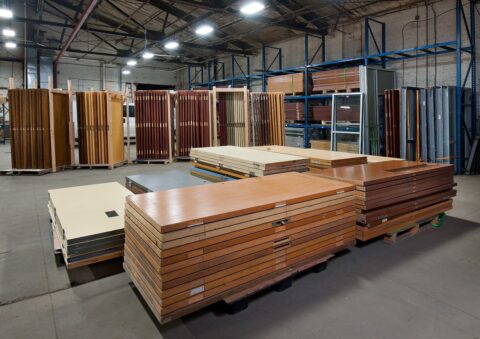How much embodied carbon are you sitting on?

What generates more embodied carbon emissions, an office building or all the stuff inside it? It’s the sort of question that’s rarely asked and tough to answer. Despite the name, a Whole Building Life Cycle Analysis generally excludes the interiors, mainly because there are so many components from so many manufacturers.
Which is why it’s refreshing to see the excellent work done by LMN Architects in Seattle. As part of the firm’s Path to Zero Carbon series, they investigated the hidden carbon impacts in the remodeling of their offices.
They found that while the one-time impact of a building’s structural components are significant and well understood, the interior design refreshes every decade can contribute the same or more to the overall embodied carbon emissions.
And their most eye-opening finding, as summarized in the chart above: The furniture in their relatively spare 2.5-floor offices accounted for nearly half of the remodel’s total embodied carbon.
As architecture and design firms dig deeper into the data of sustainability, we expect much more focus on furniture, fixtures, and equipment. All of which leads back to the Circular Workplace and the importance of reuse. It’s always made good sense to relocate, resell, donate, or recycle surplus office assets, as Green Standards has been doing at scale since 2009. Increasingly, the carbon accounting exists to prove it.

We’re launching our Who’s Who in the Circular Workplace report at IFMA World Workplace in San Antonio in October, and there’s still time to be included! Just take five minutes to tell us who you are, what you do, and what sort of supports you need, and we’ll use your input to raise awareness of workplace circularity.
LEED v5 aims to simplify building circularity, and other news
- Historically, LEED and circularity have been on parallel tracks, headed in the same direction but with little overlap. With the next version of the influential green building rating system coming soon, LEED Fellow Daniel Overbey explains in Revolve Media why that’s about to change for the better.
- Despite our above excitement about holistic carbon analysis — the stuff as well as the structure — it’s conspicuously absent from this month’s Building Sector Target-Setting Criteria report from the Science Based Targets initiative.
- We’re thrilled that The McMorrow Reports, the #1 trusted provider of Facilities Management and Design insights, has highlighted our Managing the Circular Workplace panel as one of the five sessions to attend at IFMA World Workplace in October. Join us in San Antonio!
We’re always looking for case studies, actionable tips, and news items about the circular workplace. Reach out at hello@circularworkplace.com to join our coalition.
Signup for the Roundup
Subscribe to our newsletter and we’ll send you circular workplace updates every month







